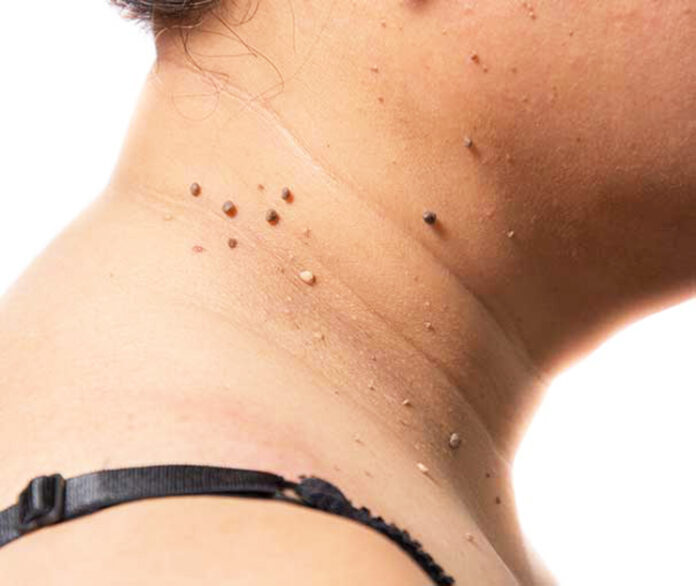There are several skin lesions that are very common and benign (noncancerous). These conditions include moles, freckles, skin tags, benign lentigines (liver spots), and seborrheic keratoses.
Freckles and Your Skin
Freckles are small brown spots usually found on the face, neck, chest, and arms. Freckles are extremely common and are not a health threat. They are more often seen in the summer, especially among lighter-skinned people and people with light or red hair.
Do Freckles Need to Be Treated?
Since freckles are almost always harmless, there is no need to treat them. As with many skin conditions, it’s best to avoid the sun as much as possible, or use a broad-spectrum sunscreen with an SPF (sun protection factor) of at least 30. This is especially important because people who freckle easily (for example, lighter-skinned people) are more likely to get skin cancer.
If you feel that your freckles are a problem or you don’t like the way they look, you can cover them up with makeup or consider certain types of laser treatment, liquid nitrogen treatment, or chemical peels.
What Causes Freckles?
Causes of freckles include genetics and exposure to the sun.
A lentigo is a spot on the skin that is darker (usually brown) than the surrounding skin. Lentigines are more common among White people, especially those with fair skin. They’re often called liver spots.
Can Lentigines Be Prevented?
The best way to prevent lentigines is to stay out of the sun as much as possible, especially between 10 a.m. and 2 p.m. Use a broad-spectrum sunscreen with an SPF of 30 or higher when outdoors, and wear protective clothing, such as long-sleeved shirts, pants, and a wide-brimmed hat. Avoid using tanning beds.
What Causes Lentigines?
Exposure to the sun seems to be the major cause of lentigines. Lentigines most often appear on parts of the body that get the most sun, including the face and hands. Some lentigines may be caused by genetics (family history) or by medical procedures such as radiation therapy.
Skin Tags and Your Skin
A skin tag is a small flap of tissue that hangs off the skin by a connecting stalk. Skin tags are not dangerous. They are usually found on the neck, chest, back, armpits, under the breasts, or in the groin area. Skin tags appear most often in women, especially with weight gain, and in people in middle age and older.
Skin tags usually don’t cause any pain. But they can become irritated if things like clothing, jewelry, or skin rub against them.
How Are Skin Tags Treated?
Your dermatologist can remove a skin tag by cutting it off with a scalpel or scissors, with cryosurgery (freezing it off), or with electrosurgery (burning it off with an electric current).
Source: webmd.com










